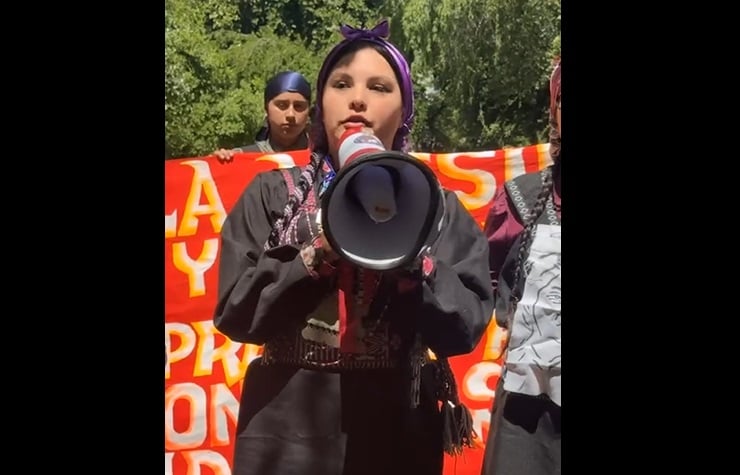Afghanistan’s women are still fighting: Inside the fight for rights under Taliban – UN Women Asia and the Pacific

Report on the State of Women’s Rights and Sustainable Development in Afghanistan
Executive Summary: A Crisis of Gender Equality and Sustainable Development
Afghanistan is experiencing a severe women’s rights crisis, representing a catastrophic regression for the nation’s progress towards the Sustainable Development Goals (SDGs). Following the Taliban takeover in August 2021, hard-won gains in gender equality have been systematically dismantled. This report details the profound negative impact on key SDGs, including SDG 5 (Gender Equality), SDG 4 (Quality Education), SDG 8 (Decent Work and Economic Growth), and SDG 16 (Peace, Justice and Strong Institutions). It also outlines the strategic response by UN Women and its partners, which aims to mitigate the crisis and uphold the principles of the 2030 Agenda for Sustainable Development.
Systematic Erosion of Sustainable Development Goals
SDG 5: Gender Equality
The progress towards SDG 5 has been reversed. Afghanistan now ranks among the lowest in the world for gender equality, with the de facto authorities institutionalizing discrimination through a series of edicts and decrees. Key indicators of this regression include:
- The issuance of over 80 edicts and directives that systematically target and restrict the rights and autonomy of women and girls.
- A complete absence of female representation in the de facto Cabinet and local government offices, violating principles of inclusive institutions.
- Severe restrictions on women’s freedom of movement and their access to public spaces, including parks, gyms, and sports facilities.
SDG 4: Quality Education
The fundamental right to education for women and girls has been severely curtailed, directly undermining SDG 4. The de facto authorities have banned female education beyond the sixth grade. Data from the UN Women’s 2024 Afghanistan Gender Index confirms that nearly 80 percent of young Afghan women are not in education, employment, or training (NEET), creating a lost generation and jeopardizing the country’s future development.
SDG 8: Decent Work and Economic Growth
The exclusion of women from most professions has crippled their economic independence and obstructs progress on SDG 8. Despite these restrictions, women demonstrate resilience by creating alternative economic opportunities, such as online businesses. However, the systemic barriers prevent widespread economic participation and contribute to household poverty, directly impacting SDG 1 (No Poverty).
SDG 16: Peace, Justice and Strong Institutions
The framework for SDG 16 has been dismantled. Constitutional rights for women, established in the 2000s, have been erased. The current governance structure lacks inclusivity and accountability, systematically excluding women’s voices from decision-making processes at all levels. This undermines the establishment of peaceful, just, and effective institutions.
Strategic Interventions and Partnerships for the Goals (SDG 17)
In response to the crisis, UN Women, in alignment with SDG 17 (Partnerships for the Goals), has intensified its support for Afghan women and girls through collaboration with local and international partners.
Strengthening Women’s Organizations and Leadership
A primary strategy is to empower local civil society. The flagship initiative, “Rebuilding the Women’s Movement,” funded by a consortium of international partners, directly supports local women’s organizations. This program embodies the principle of working by women, for women and has achieved the following:
- Partnered with over 200 women’s organizations across all 34 provinces in 2024.
- Sustained 140 grassroots organizations, enabling them to retain staff and create safe spaces for women leaders.
- Provided direct assistance to over 16,000 women through skills training, business starter kits, and awareness-raising campaigns.
Targeted Humanitarian and Economic Support
UN Women implements programs that address immediate needs while building long-term resilience, contributing to multiple SDGs.
- Literacy, Livelihoods, and Health (SDG 4, SDG 8, SDG 3): In provinces like Nuristan, literacy initiatives supported by UN Women empower women with fundamental skills. Improved literacy enhances their ability to strengthen livelihoods, such as dairy farming, and improve their access to healthcare information.
- Support for Returnees (SDG 10, SDG 3): At the border with Pakistan, women-only information desks run by local women humanitarians provide safe, confidential support for female returnees. This initiative reduces inequalities in access to information and addresses the specific health and well-being needs of a vulnerable population.
- Advocacy and Data Collection (SDG 16): UN Women conducts regular country-wide consultations with thousands of Afghan women. The insights gathered are critical for shaping humanitarian responses and informing international policy discussions, including at the UN Security Council, ensuring women’s voices are not silenced.
Conclusion: Upholding Global Commitments to the SDGs
The situation in Afghanistan is a critical test of the global community’s commitment to the Sustainable Development Goals. The targeted erasure of women’s rights is an affront to human dignity and a significant impediment to the nation’s sustainable future. Continued and intensified international solidarity, channeled through partnerships with Afghan women and their organizations, is essential to hold the line on women’s rights and keep the hope for a more equitable and prosperous Afghanistan alive.
Analysis of Sustainable Development Goals in the Article
1. Which SDGs are addressed or connected to the issues highlighted in the article?
- SDG 4: Quality Education – The article extensively discusses the denial of educational opportunities for women and girls in Afghanistan, including bans on education after Grade Six and university closures. It also highlights literacy initiatives.
- SDG 5: Gender Equality – This is the central theme of the article, which details the systematic erasure of women’s rights, their exclusion from public and political life, and the efforts of organizations like UN Women to support them.
- SDG 8: Decent Work and Economic Growth – The article addresses the economic exclusion of women, noting bans from most professions and the high percentage of young women not in employment, education, or training (NEET). It also covers women’s resilience in starting businesses.
- SDG 16: Peace, Justice and Strong Institutions – The article touches upon the legal and institutional framework concerning women’s rights, contrasting the previous constitution that enshrined their rights with the current Taliban edicts that dismantle them, and highlighting the complete absence of women in government.
2. What specific targets under those SDGs can be identified based on the article’s content?
-
SDG 4: Quality Education
- Target 4.1: Ensure that all girls and boys complete free, equitable and quality primary and secondary education. The article highlights the violation of this target by mentioning the ban on women’s education “after Grade Six”.
- Target 4.3: Ensure equal access for all women and men to affordable and quality technical, vocational and tertiary education, including university. This is directly relevant as the article states that universities were “closed to women”.
- Target 4.5: Eliminate gender disparities in education and ensure equal access to all levels of education. The entire discussion on educational bans for women directly relates to the regression of this target in Afghanistan.
- Target 4.6: Ensure that all youth and a substantial proportion of adults, both men and women, achieve literacy and numeracy. The article mentions a “literacy initiative supported by UN Women” in Nuristan province, which directly aims at this target.
-
SDG 5: Gender Equality
- Target 5.1: End all forms of discrimination against all women and girls everywhere. The article describes a “complex patchwork of more than 80 edicts, directives and decrees introduced by the Taliban” that “directly and systematically targeted women’s rights and autonomy,” which is a clear example of institutionalized discrimination.
- Target 5.5: Ensure women’s full and effective participation and equal opportunities for leadership at all levels of decision-making in political, economic and public life. The article explicitly states, “Not a single woman has a position in the de facto Cabinet or local offices,” and contrasts this with the past when women were in parliament.
- Target 5.c: Adopt and strengthen sound policies and enforceable legislation for the promotion of gender equality. The article contrasts the previous Afghan constitution, which “enshrined women’s rights,” with the current “draconian legislation” that imposes “unprecedented restrictions on women’s rights and freedoms.”
-
SDG 8: Decent Work and Economic Growth
- Target 8.5: Achieve full and productive employment and decent work for all women and men. The ban on women from “most professions” is a direct setback for this target. However, the article also shows efforts towards this goal through women running “online store[s]” and UN Women providing “business starter kits”.
- Target 8.6: Substantially reduce the proportion of youth not in employment, education or training (NEET). The article provides a direct statistic for this target, stating that “Nearly 80 per cent of young Afghan women are not in education, employment or training.”
-
SDG 16: Peace, Justice and Strong Institutions
- Target 16.7: Ensure responsive, inclusive, participatory and representative decision-making at all levels. The lack of any female representation in the “de facto Cabinet or local offices” demonstrates a complete failure to meet this target.
- Target 16.b: Promote and enforce non-discriminatory laws and policies for sustainable development. The article highlights the enforcement of discriminatory policies through the “more than 80 edicts, directives and decrees” targeting women.
3. Are there any indicators mentioned or implied in the article that can be used to measure progress towards the identified targets?
-
Indicators for SDG 4
- Indicator for Target 4.1/4.5: The policy banning women from education “after Grade Six” serves as a qualitative indicator of regression.
- Indicator for Target 4.3/4.5: The closure of universities to women is a clear indicator of the denial of access to tertiary education.
- Indicator for Target 4.6: The establishment of “130 Village Literacy Committees” is a quantifiable indicator of intervention efforts to improve adult literacy.
-
Indicators for SDG 5
- Indicator for Target 5.1/5.c: The “more than 80 edicts, directives and decrees” serves as a quantitative indicator of discriminatory laws and policies being enacted.
- Indicator for Target 5.5: The proportion of positions held by women in government is explicitly stated as zero: “Not a single woman has a position in the de facto Cabinet or local offices.”
- Indicator for Target 5.c: The number of women’s organizations supported (“more than 200 women’s organizations in 2024”) and the number of women reached by their programs (“more than 16,000 women through awareness-raising, skills training, business starter kits and childcare”) are indicators of efforts to empower women and strengthen civil society.
-
Indicators for SDG 8
- Indicator for Target 8.6: The article provides a direct measurement: “Nearly 80 per cent of young Afghan women are not in education, employment or training.”
- Indicator for Target 8.5: The provision of “business starter kits” is an indicator of support for women’s economic empowerment and entrepreneurship.
-
Indicators for SDG 16
- Indicator for Target 16.7: The number of women in cabinet or local government positions is stated as zero, serving as a direct indicator of non-inclusive decision-making.
- Indicator for Target 16.b: The existence of over 80 discriminatory edicts is a clear indicator of the enforcement of discriminatory policies.
4. Table of SDGs, Targets, and Indicators
| SDGs | Targets | Indicators Identified in the Article |
|---|---|---|
| SDG 4: Quality Education |
4.3: Equal access to tertiary education.
4.5: Eliminate gender disparities in education. 4.6: Achieve literacy and numeracy. |
Universities are “closed to women.”
Women are banned from education “after Grade Six.” “130 Village Literacy Committees were also established” through literacy initiatives. |
| SDG 5: Gender Equality |
5.1: End all forms of discrimination against women.
5.5: Ensure women’s full participation and equal opportunities for leadership. 5.c: Adopt and strengthen sound policies and enforceable legislation for gender equality. |
“more than 80 edicts, directives and decrees” systematically target women’s rights.
“Not a single woman has a position in the de facto Cabinet or local offices.” Support provided to “more than 200 women’s organizations in 2024.” |
| SDG 8: Decent Work and Economic Growth |
8.5: Achieve full and productive employment and decent work for all.
8.6: Reduce the proportion of youth not in employment, education or training (NEET). |
Women are banned from “most professions,” but some run businesses and receive “business starter kits.”
“Nearly 80 per cent of young Afghan women are not in education, employment or training.” |
| SDG 16: Peace, Justice and Strong Institutions |
16.7: Ensure responsive, inclusive, participatory and representative decision-making.
16.b: Promote and enforce non-discriminatory laws and policies. |
The proportion of women in government positions is zero.
The existence of over 80 discriminatory edicts targeting women. |
Source: asiapacific.unwomen.org

What is Your Reaction?
 Like
0
Like
0
 Dislike
0
Dislike
0
 Love
0
Love
0
 Funny
0
Funny
0
 Angry
0
Angry
0
 Sad
0
Sad
0
 Wow
0
Wow
0











































































